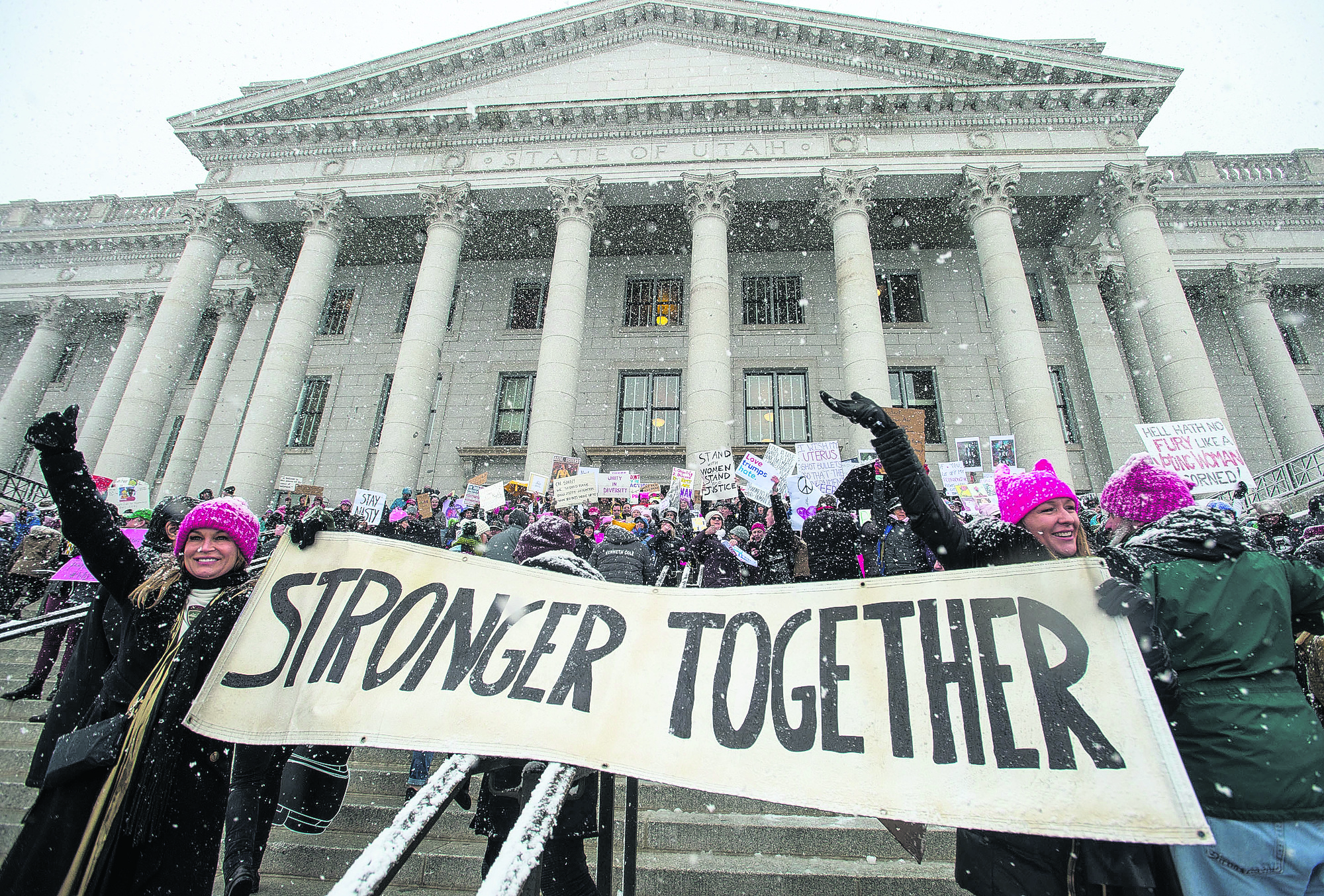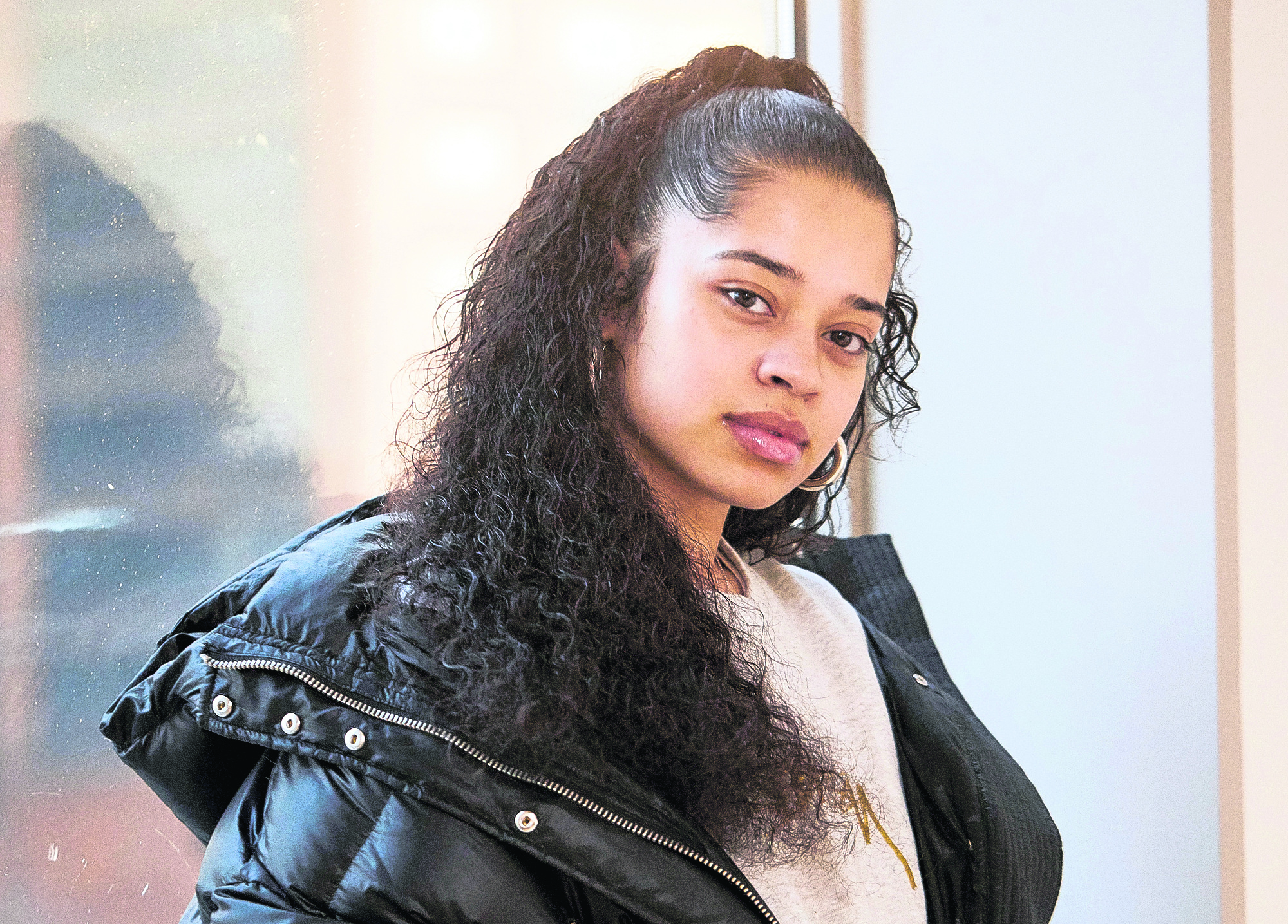
By DAVID CRARY
AP National Writer
Suddenly, America is on the march. Saturday’s March for Our Lives, planned for Washington and hundreds of other locations, is just the most recent sign that an extraordinary number of Americans are taking to heart the old truism that democracy should not be a spectator sport. In numbers not seen since the tumult of the 1960s and ’70s, multitudes are venturing off the sidelines and into the game in a remarkable surge of political and social activism.
Their ranks include high school students angered by gun violence, teachers fed up with low pay, and women energized by a range of grievances — notably pervasive sexual harassment and the longtime dominance of men in political power. The array of massive women’s marches in January 2017, primarily a backlash to Donald Trump’s election as president, served as prelude to the #MeToo movement, which caught fire in October and continues to this day as emboldened women call out men who have sexually mistreated them in workplaces ranging from Hollywood to state legislatures to symphony orchestras.
The Feb. 14 massacre at a high school in Parkland, Florida, reignited the simmering national campaign
to curtail gun violence. Tens of thousands of students across the U.S. walked out of their classrooms on March 14 to demand action by politicians, a prelude to this weekend’s March for Our Lives.
“I’m scared to attend my own school,” said Scarlett Scott-Buck, one of about 100 high school students
from Lake Oswego, Oregon, who traveled to the state capitol for a recent gun-control rally. “I’m here to be an activist for my rights to live, my friends’ rights to live.”
As the gun-control campaign was spreading nationally, public school teachers in West Virginia provided a dramatic example of how organized activism can prevail. After a nine-day walkout, they won a 5 percent pay raise even though they lacked collective bargaining rights and had no legal right to strike. Racial tensions also have fueled activism, including the Black Lives Matter campaign protesting the deaths of black men at the hands of police, and the take-a-knee protests by some National Football League players.
Randi Weingarten, president of the American Federation of Teachers, sees a common denominator in
the overlapping movements. “People see that when they come together, they have power that they don’t have when they’re alone,” she said. “Trump says ‘I alone can do it.’ But in these movements being created now, there’s a sense that with collective action, you can make possible what would have seemed impossible.” Another common denominator: The use of social media to publicize and organize a movement with a speed and scope beyond the wildest dreams of activists in the 1960s.
It took only a few days for global use of the #MeToo hashtag to pass the 1 million mark. Parkland student Emma Gonzalez quickly amassed more than 1.2 million Twitter followers after the shooting. And the West Virginia teachers plotted their walkout strategy over a private Facebook page that grew from an initial 100 members to more than 24,000.
The new embrace of activism has spread into the realm of pop culture as well. When Frances
McDormand accepted her Best Actress award at the Oscars, she urged all the women to stand in unison in support of equal pay. She was on stage accepting the Academy Award for her role in “Three
Billboards Outside Ebbing, Missouri,” fittingly about a mother who takes matters into her own hands and fights back against the status quo.
The protests have echoes of what happened the last time a new president was elected. In 2010,
conservatives staged boisterous rallies around the country in response to President Barack Obama’s
health care law. The tea party movement helped Republicans complete a takeover of Congress the
midterm elections that year. Some organizers of the current protests have openly borrowed strategies developed by the tea party.
The group Indivisible was launched as an online handbook in December 2016 by two former Democratic congressional staffers in hopes of building anti-Trump resistance, similar to what the tea party was to Obama. As it became more of a force in activism, Indivisible has taken money from deep-pocketed donors, leading to criticism that the protest movement is more of an effort by powerful people on the left than a truly grass-roots endeavor. Indivisible co-founder Ezra Levin disagrees, saying many of the movement’s recruits are first-time activists eager to make a difference.
Among those getting deeply engaged are a record number of women seeking high-level political office. Nearly 500 women — roughly three-quarters of them Democrats — plan to run for Congress this year,
according to the Center for American Women and Politics at Rutgers University. That’s up from 334
women who filed to run for the House or Senate in 2012, the previous record high. Women currently hold 106 of the 535 seats in Congress.
Political science professor Kelly Dittmar, a scholar at the Rutgers-based center, said the surge of
Democratic women seeking office reflects their concerns about the 2016 election results.
“It created a sense of urgency,” Dittmar said. “They felt they needed to be at the table to protect against what many women feared would be pullback on protections and advances made over the previous eight years.”
What lies ahead for these recently ascendant movements? For school teachers, the West Virginia walkout has clearly been an inspiration. Teachers in Kentucky, Oklahoma and Arizona have been threatening walkouts of their own as they press for pay raises or oppose pension cutbacks.
The national gun-control movement seems certain to remain energized for the foreseeable future by the infusion of student-led activism, even if Congress and many state legislatures balk at meeting the
activists’ demands.
Shannon Watts, who founded Moms Demand Action for Gun Sense in America after the December 2012 school massacre in Newtown, Connecticut, says her nationwide organization has added 135,000 new volunteers since the Parkland shooting who have been helping press elected officials to curb gun
violence. “We’ve never seen this kind of outpouring of interest, and people getting off the sidelines,” Watts said. “We’re seeing our events so full, we have to move them to new venues.” As for #MeToo, there have been some suggestions the movement has peaked and is being overshadowed by the gun protests.
However, many activist women say the movement is assured of a lasting legacy, particularly in the way gender equality is addressed in America’s workplaces. Dittmar said #MeToo and the surge of women seeking office overlap in ways that will ensure those developments have staying power.
Eric Liu, a former adviser to President Bill Clinton and founder of a nonprofit called Citizen University,
says the protest campaigns’ names and social-media hashtags may change, but their influence will
endure. “When movements are decentralized, and change is coming from the bottom up, the movements end up being way more resilient,” he said. “People’s underlying norms have shifted — the default setting has changed from ‘I’m powerless’ to ‘I’m potentially powerful.'”
___
Associated Press writer Andrew Selsky in Salem, Oregon, contributed to this report.
___
Follow David Crary on Twitter at http://twitter.com/CraryAP
















